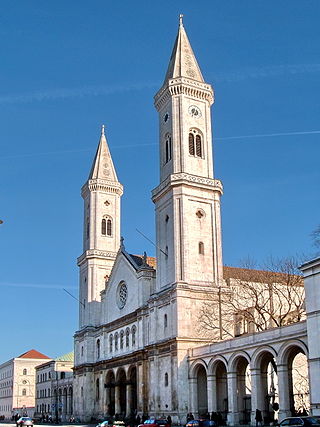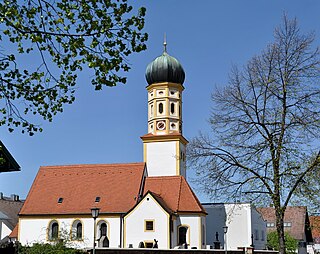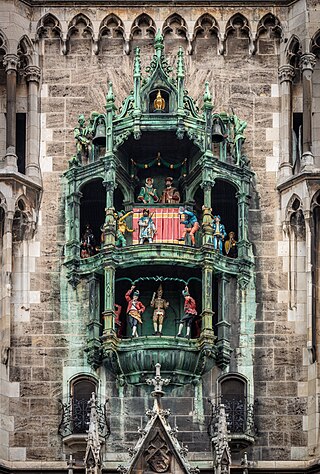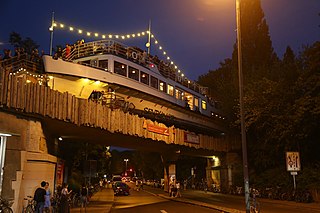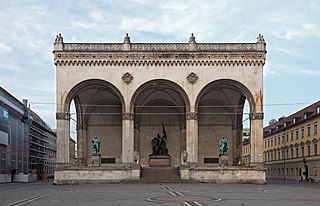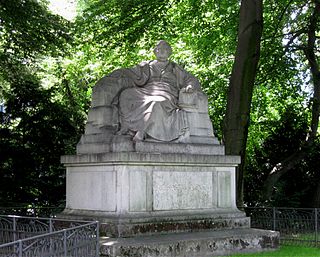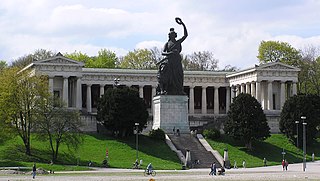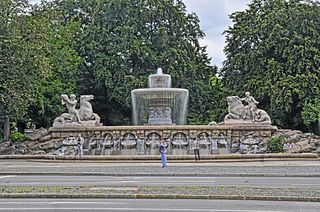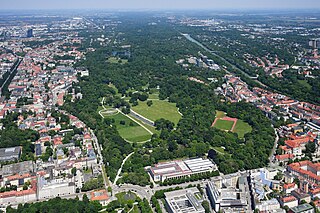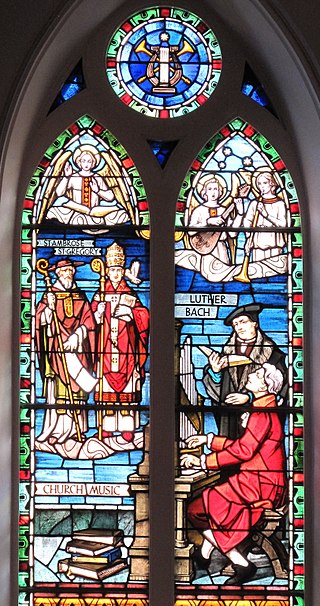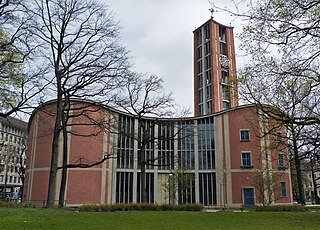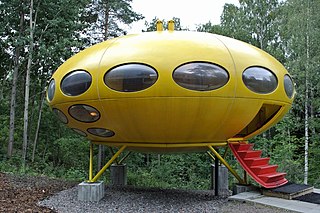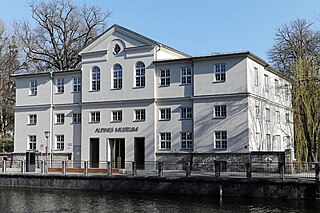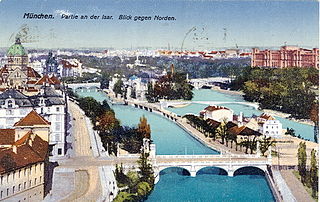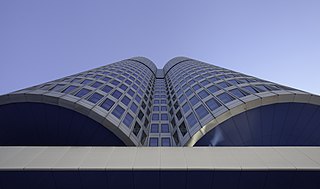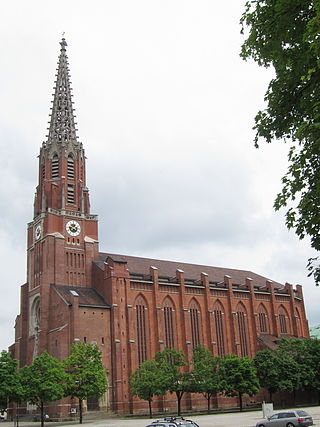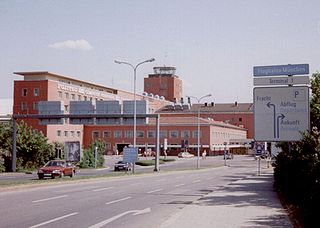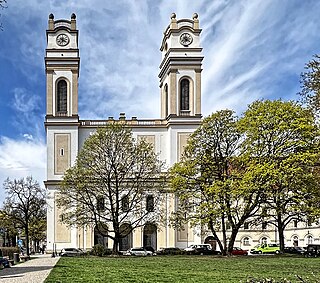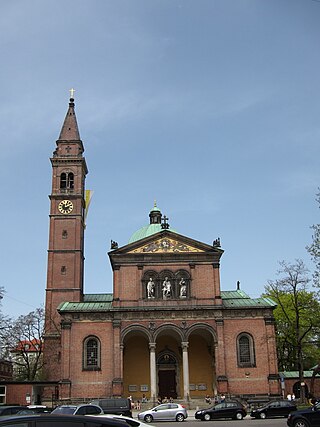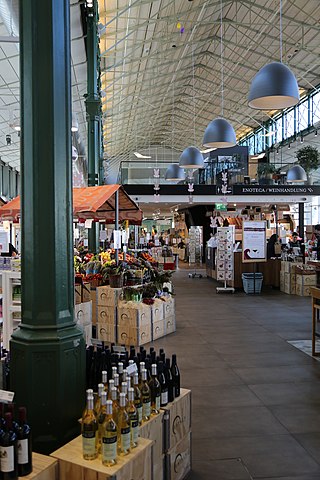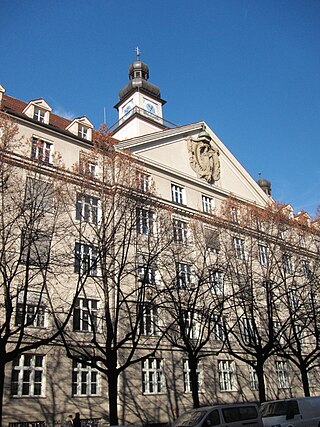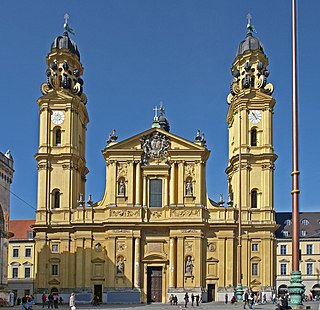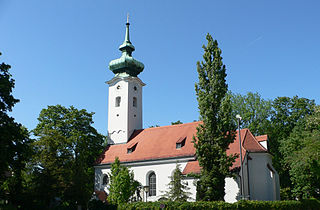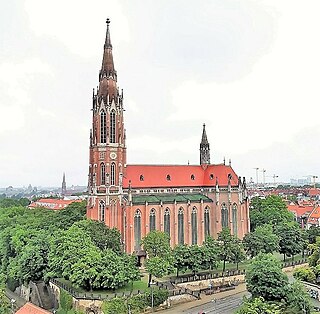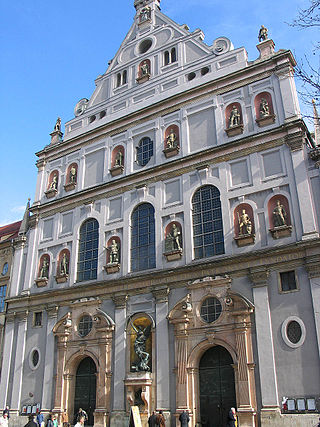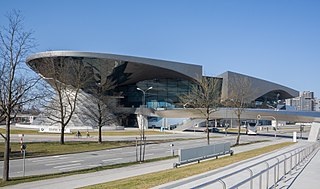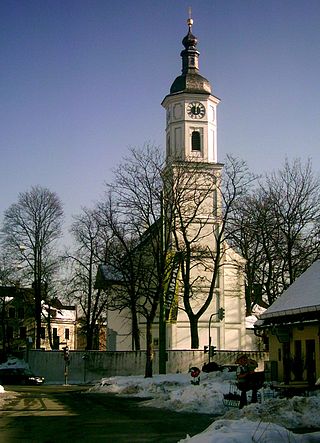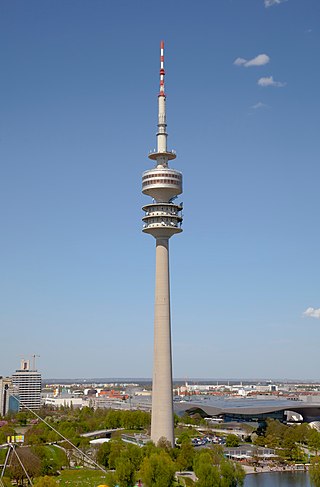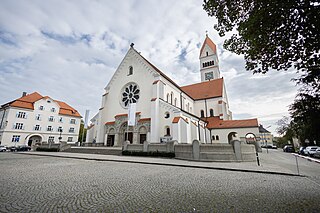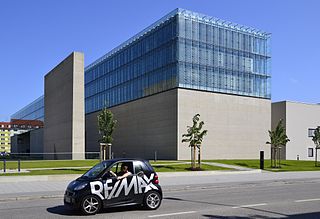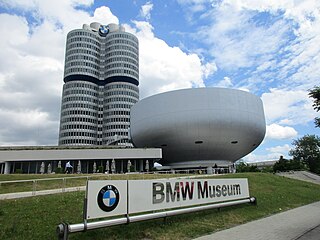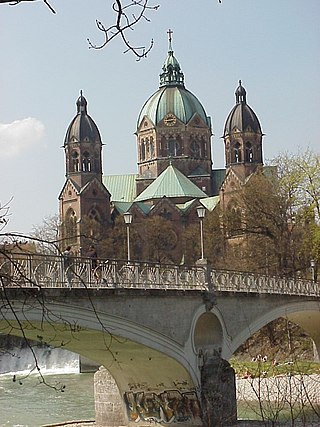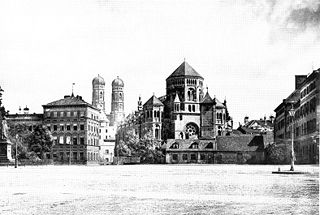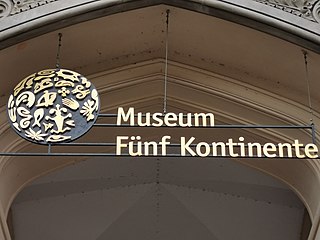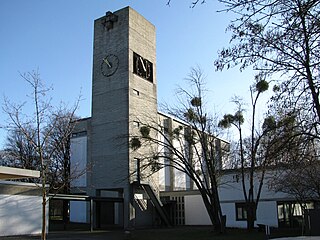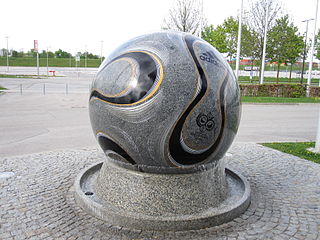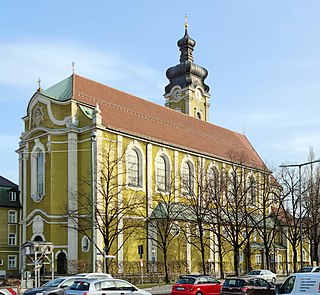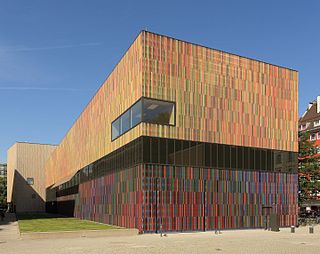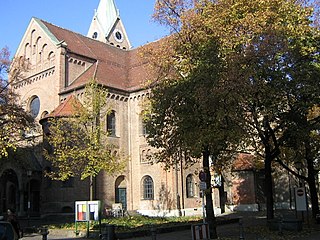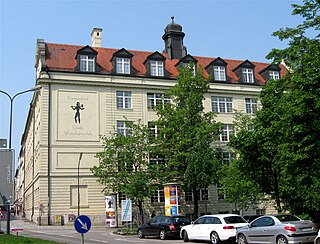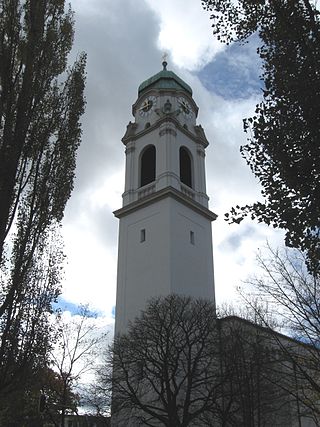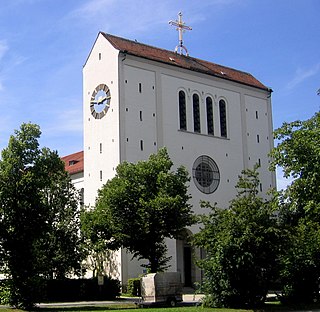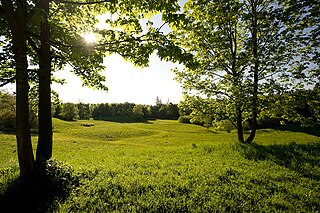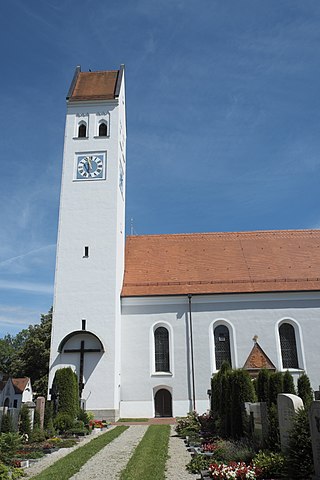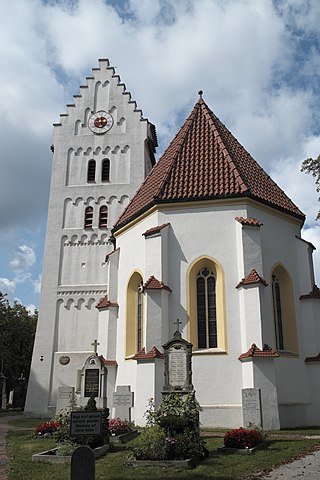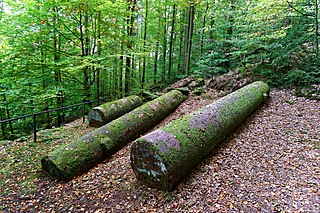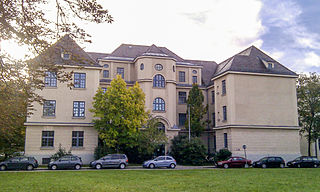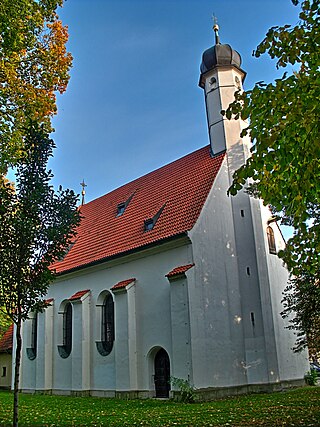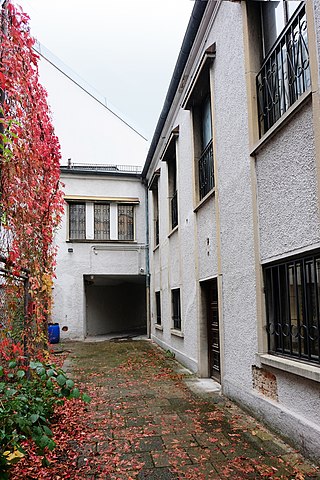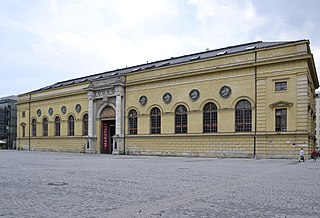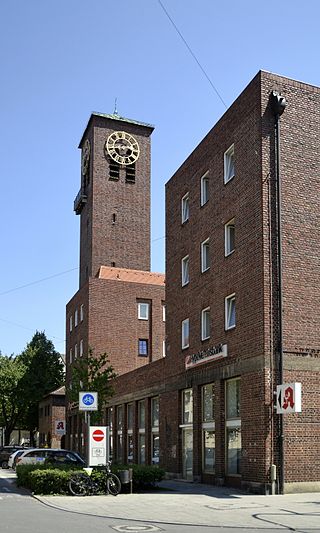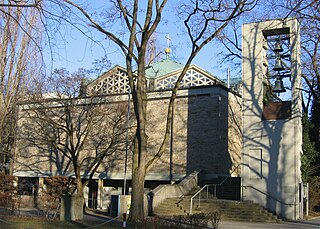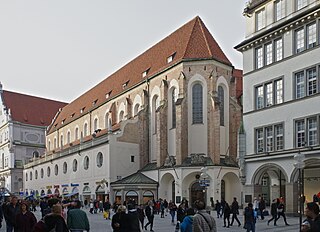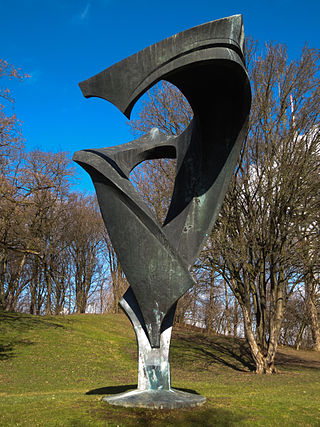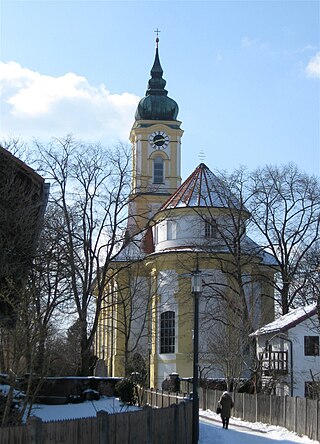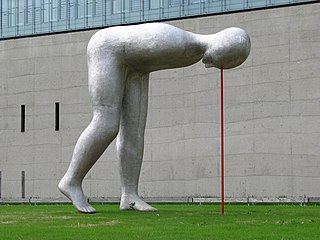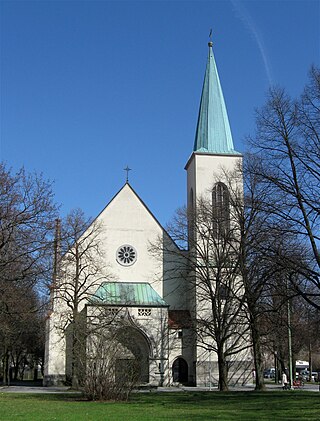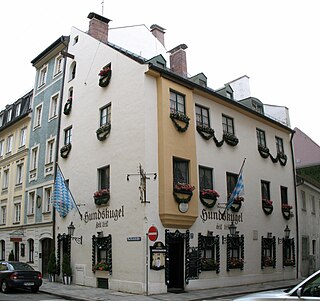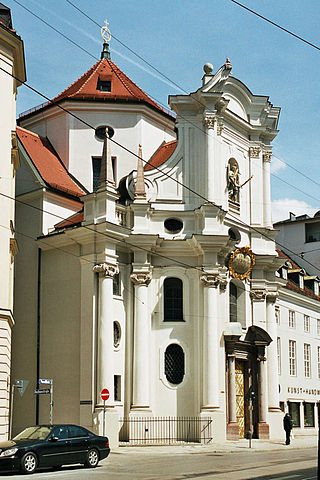100 Sights in Munich, Germany (with Map and Images)
Legend
Premium Sights
Book tickets, guided tours and activities in Munich.
Guided Free Walking Tours
Book free guided walking tours in Munich.
Welcome to your journey through the most beautiful sights in Munich, Germany! Whether you want to discover the city's historical treasures or experience its modern highlights, you'll find everything your heart desires here. Be inspired by our selection and plan your unforgettable adventure in Munich. Dive into the diversity of this fascinating city and discover everything it has to offer.
Sightseeing Tours in MunichActivities in Munich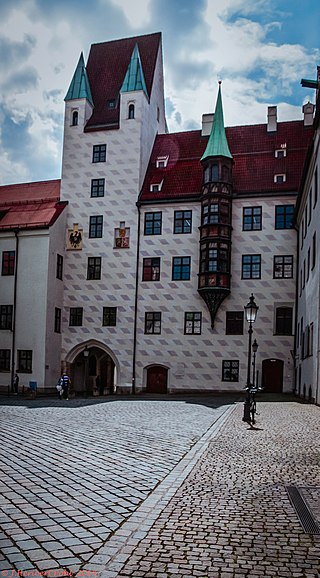
The Alter Hof in the center of Munich is the former imperial residence of Louis IV, Holy Roman Emperor and consists of five wings: Burgstock, Zwingerstock, Lorenzistock, Pfisterstock and Brunnenstock. Like most of the old town, it was rebuilt after being destroyed in World War II.
The Catholic Parish and University Church of St. Louis, called Ludwigskirche, in Munich is a monumental church in Neo-Romanesque style with the second-largest altar fresco of the world. The building, with its round arches called the Rundbogenstil, strongly influenced other church architecture, train stations and synagogues in both Germany and the United States.
In graffiti jargon, the Hall of Fame refers to places or wall surfaces where experienced writers in particular meet and high-quality and sophisticated graffiti is painted. In many cases, the areas are approved for painting by the respective owner. However, there are also Halls of Fame that were created illegally.
St. Peter's Church is a Roman Catholic parish church in the inner city of Munich, southern Germany. Its 91-metre (299 ft) tower is commonly known as "Alter Peter"—Old Peter—and is emblematic of Munich. St Peter's is the oldest recorded parish church in Munich and presumably the originating point for the whole city.
5. Karolinenplatz
The obelisk on Karolinenplatz is a memorial in Munich. It was built in 1833 by King Ludwig I by the architect Leo von Klenze for the 30,000 Bavarian soldiers who had fallen in the Napoleonic Russian campaign of 1812.
6. Nymphenburg Palace
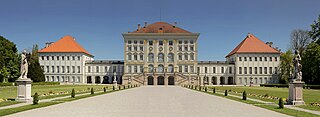
The Nymphenburg Palace is a Baroque palace situated in Munich's western district Neuhausen-Nymphenburg, in Bavaria, southern Germany. The Nymphenburg served as the main summer residence for the former rulers of Bavaria of the House of Wittelsbach. Combined with the adjacent Nymphenburg Palace Park it constitutes one of the premier royal palaces of Europe. Its frontal width of 632 m (2,073 ft) even surpasses Versailles.
7. Siegestor
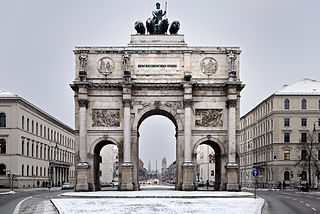
The Siegestor in Munich is a three-arched memorial arch, crowned with a statue of Bavaria with a lion-quadriga. The monument was originally dedicated to the glory of the Bavarian army. Since its restoration following World War II, it now stands as a reminder to peace.
The Rathaus-Glockenspiel is a large mechanical clock located in Marienplatz Square, in the heart of Munich, Germany. Famous for its life-size characters, the clock twice daily re-enacts scenes from Munich's history. First is the story of the marriage of Duke Wilhelm V to Renata of Lorraine in 1568, followed by the story of the Schäfflerstanz, also known as the coopers' dance.
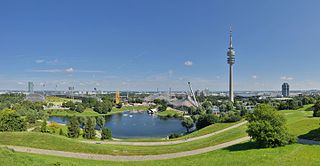
The Olympiapark in Munich, Germany, is an Olympic Park which was constructed for the 1972 Summer Olympics. Located in the Oberwiesenfeld neighborhood of Munich, the Park continues to serve as a venue for cultural, social, and religious events, such as events of worship. It includes a contemporary carillon. The Park is administered by Olympiapark München GmbH, a holding company fully owned by the state capital of Munich. The Olympic Park Munich was also considered to be an architectural marvel during the 1972 Olympics in Munich, Germany.
10. Alte Utting
The Alte Utting is a bar, nightclub and music venue in Munich. The decommissioned, land-bound passenger ship is placed on a railway bridge that crosses an inner-city arterial road, and is regarded as one of the most spectacular nightlife spots of the city.
11. Feldherrnhalle
The Feldherrnhalle is a monumental loggia on the Odeonsplatz in Munich, Germany. Modelled after the Loggia dei Lanzi in Florence, it was commissioned in 1841 by King Ludwig I of Bavaria to honour the tradition of the Bavarian Army.
12. Fischbrunnen
The Fischbrunnen is a small fountain in the Munich district of Pasing. It was created in 1938 by the Pasing sculptor Hans Osel in connection with the relocation of the Pasing Viktualienmarkt to the courtyard of the newly built market hall.
13. Fischbrunnen
The Fischbrunnen is a fountain in the center of Munich, whose history can be traced back to the Middle Ages. In 1954, Josef Henselmann created the fountain in its present form, using parts of Konrad Knoll’s neo-gothic fountain that was destroyed during the Second World War.
14. Richard Wagner
The Richard Wagner Monument is a monumental seat monument to the composer Richard Wagner created by the sculptor Heinrich Waderé. It is located in a green area on Prinzregentenplatz in Munich's Bogenhausen district between the Prinzregententheater and the Prinzregentenstadion. After a selection from various drafts, it was the turn of the one who shows Richard Wagner in a similar pose to Goethe in his portrait of Goethe in the Campagna.
15. Bavaria
Bavaria is the female symbolic figure and secular patron of Bavaria and appears as a personified allegory for the state of Bavaria in various forms and manifestations. She thus represents the secular counterpart to Mary as the religious Patrona Bavariae.
16. Peterl-Brunnen
This page gives an overview of fountains in the city of Munich that are open to the public. There are almost 700 fountains throughout Munich, 190 are operated by the state capital of Munich, and others by the Free State of Bavaria or by public or private institutions. Most fountains are only for decoration; 125 municipal fountains are fed with drinking water, 48 fountains are designated as official drinking fountains.
17. Rumfordschlössl
The Englischer Garten is a large public park in the centre of Munich, Bavaria, stretching from the city centre to the northeastern city limits. It was created in 1789 by Sir Benjamin Thompson (1753–1814), later Count Rumford, for Prince Charles Theodore, Elector of Bavaria. Thompson's successors, Reinhard von Werneck (1757–1842) and Friedrich Ludwig von Sckell (1750–1823), advisers on the project from its beginning, both extended and improved the park.
18. Alte Pinakothek
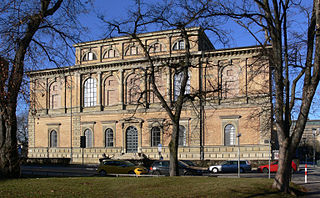
The Alte Pinakothek is an art museum located in the Kunstareal area in Munich, Germany. It is one of the oldest galleries in the world and houses a significant collection of Old Master paintings. The name Alte (Old) Pinakothek refers to the time period covered by the collection—from the fourteenth to the eighteenth century. The Neue Pinakothek, re-built in 1981, covers nineteenth-century art, and Pinakothek der Moderne, opened in 2002, exhibits modern art. All three galleries are part of the Bavarian State Painting Collections, an organization of the Free state of Bavaria.
19. Mayer'sche Hofkunstanstalt GmbH
Franz Mayer of Munich is a German stained glass design and manufacturing company, based in Munich, Germany and a major exponent of the Munich style of stained glass, that has been active throughout most of the world for over 170 years. The firm was popular during the late nineteenth and early twentieth century, and was the principal provider of stained glass to the large Roman Catholic churches that were constructed throughout the world during that period. Franz Mayer of Munich were stained glass artists to the Holy See and consequently were popular with Roman Catholic clients. The family business is nowadays managed by the fifth generation and works in conjunction with renowned artists around the world.
20. Pfarrkirche St. Matthäus
The Evangelical Lutheran parish church of St. Matthew, also known as St. Matthew's Church, is the most important Protestant church in Munich. The current building, which was built according to plans by Gustav Gsaenger between 1953 and 1957, is the successor to the old St. Matthew's Church, which was built in 1833 in the post-classical style as the first Protestant church in Munich and demolished in 1938. St. Matthäus is a bishop's church of the Evangelical Lutheran Church in Bavaria.
21. Futuro-Haus
A Futuro house, or Futuro Pod, is a round, prefabricated house designed by Finnish architect Matti Suuronen, of which fewer than 100 were built during the late 1960s and early 1970s. The shape, reminiscent of a flying saucer, and the structure's airplane hatch entrance has made the houses sought after by collectors. The Futuro is composed of fiberglass-reinforced polyester plastic, polyester-polyurethane, and poly(methyl methacrylate), measuring 4 metres high and 8 metres in diameter.
22. Alpines Museum
The Alpine Museum in Munich is an institution of the German Alpine Club (DAV), a cultural centre with a library, archive and collection on the history of alpinism. It houses the joint Historical Alpine Archive of the German Alpine Club (DAV), the Austrian Alpine Club (ÖAV) and the Alpine Club South Tyrol (AVS). The museum building is the meeting place and event venue of the German Alpine Club with its 355 sections with a total of 1,520,381 members, a place that offers DAV members and the general public the opportunity to exchange ideas on alpine topics.
23. Thomassteg
There are more than 1000 bridges in the Bavarian capital of Munich. Particularly well-known and characteristic of the cityscape are the bridges over the Isar and over the wide railway line of Munich Central Station. Others, on the other hand, are hardly recognizable in the streetscape, as they lead over city streams that are now arched or disused and filled in.
24. BMW Headquarters
The BMW Headquarters, also known as the BMW Tower, is a high-rise building located in the Am Riesenfeld area of Munich, Germany. The building has served as the global corporate headquarters of German automaker BMW since 1973. It was declared a protected historic building in 1999, and it is often cited as one of the most notable examples of modern architecture in Munich. Extensive renovations commenced in 2004 and were completed in 2006.
25. Maria-Hilf-Kirche
The Catholic parish church of Maria Hilf in the Au, called Mariahilfkirche, is the main parish church of the Au. It was started by Joseph Daniel Ohlmüller from 1831 to 1839 and completed by Georg Friedrich Ziebland. The symbol of the Au is a primal model for the neo -Gothic church building of the 19th century. It is one of the three “neo-Gothic siblings in Munich”, the Heilig-Kreuz-Kirche and St. Johann Baptist, all three of which have a similar monumental brick style and are east of the Isar.
26. Brainlab Tower
Munich-Riem Airport was the international airport of Munich, the capital city of Bavaria and third-largest city of Germany. It was closed down on 16 May 1992, the day before the new Munich Airport commenced operations. It was located near the old village of Riem in the borough of Trudering-Riem in the east of Munich.
27. St. Korbinian
St. Korbinian is a Roman Catholic church at Valleystraße 24 in the Munich district of Untersendling. It is the only church in the city dedicated to Sankt Korbinian, the patron saint of the Archdiocese of Munich and Freising.
28. Kirche St. Ursula
The Catholic parish church of St. Ursula is the second parish church in the Munich district of Schwabing, in the district of Schwabing-Freimann. At the same time, St. Ursula is the first sacred building in Munich to turn away from medieval architectural models and thus take on a bridging function between historicism and Art Nouveau/modernism.
29. Schrannenhalle
The Schrannenhalle in Munich was built from 1851 to 1853 by Karl Muffat as a grain hall on the edge of the old town near the Viktualienmarkt. It was the first building in iron construction in Munich. The official name was Maximilians-Getreide-Halle, the popular Schranne at that time referred to a grain market.
30. Angergymnasium
The Theresia-Gerhardinger-Gymnasium am Anger is a girls' grammar school at Blumenstraße 26 in the Angerviertel in Munich under the auspices of the Poor School Sisters of Our Lady. It is a state-recognized grammar school with linguistic, musical and economic branches. The building also houses a primary school for girls, a kindergarten and a student dormitory of the Poor School Sisters.
31. Theatinerkirche St. Kajetan
The Theatine Church of St. Cajetan and Adelaide is a Catholic church in Munich, southern Germany. Built from 1663 to 1690, it was founded by Elector Ferdinand Maria and his wife, Henriette Adelaide of Savoy, as a gesture of thanks for the birth of the long-awaited heir to the Bavarian crown, Prince Max Emanuel, in 1662. Now administered by the Dominican Friars, it is also known as the Dominican Priory of St. Cajetan.
32. Musiklabor

The University of Music and Theatre Munich, also known as the Munich Conservatory, is a performing arts conservatory in Munich, Germany. The main building it currently occupies is the former Führerbau of the NSDAP, located at Arcisstraße 12, on the eastern side of the Königsplatz. Teaching and other events also take place at Luisenstraße 37a, Gasteig, the Prinzregententheater, and in Wilhelmstraße (ballet). Since 2008, the Richard Strauss Conservatory, until then independent, has formed part of the university.
33. St. Georg
The Catholic branch church of St. Georg is the former village church of Bogenhausen and was its spiritual centre until the church of the Holy Blood was built. Today it is best known for its Bogenhausen cemetery, where many celebrities found their final resting place.
34. Heilig Kreuz
The Catholic parish church of the Holy Cross, consecrated in 1886, is the last completely preserved neo-Gothic church in Munich. At the same time, it is the oldest of the parish churches of Giesing. After war damage in 1944, various renovation measures were carried out in the post-war period.
35. St. Michael's Church
St. Michael's is a Jesuit church in Munich, capital city of the state of Bavaria, Germany. It is the largest Renaissance church north of the Alps. The style of the building had an enormous influence on Southern German early Baroque architecture.
36. BMW Welt
The BMW Welt is a combined exhibition, delivery, adventure museum, and event venue located in Munich's district Am Riesenfeld, next to the Olympic Park, in the immediate vicinity of the BMW Headquarters and factory. It was built from August 2003 to summer 2007. A solar system with 800 kW of power is installed on the roof of the main building. The opening took place on 17 October 2007. The BMW Welt is the most visited tourist attraction in Bavaria.
37. Bayerisches Nationalmuseum
The Bavarian National Museum in Munich is one of the most important museums of decorative arts in Europe and one of the largest art museums in Germany. Since the beginning the collection has been divided into two main groups: the art historical collection and the folklore collection.
38. St. Sebastian
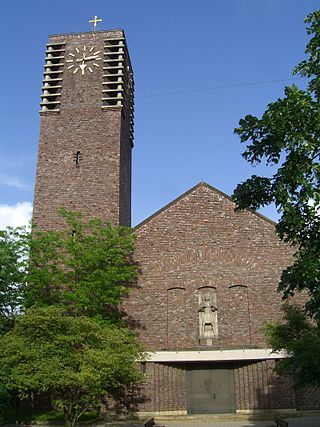
The Catholic parish of St. Sebastian belongs to the deanery of the city center and is located in the Munich district of Schwabing-West. Since 2014, it has been the seat of the parish association "Am Luitpoldpark", which was founded together with the sister parish Maria vom Guten Rat.
39. Alte Pfarrkirche St. Margaret
The old parish church of St. Margaret in Untersendling is an art-historically interesting and historically significant church building in the style of Upper Bavarian-Baroque village churches. The church is dedicated to St. Margaret of Antioch.
40. Olympiaturm
The Olympic Tower in the Olympic Park, Munich has an overall height of 291 m (955 ft) and a weight of 52,500 tons. At a height of 190 m (620 ft) there is an observation platform as well as an exhibition commemorating the 50th anniversary of the Tower. Previously in that space was a small rock-and-roll museum housing various memorabilia. Since its opening in 1968, the tower has registered over 43 million visitors. At a height of 182 m (597 ft) there is a revolving restaurant, which seats 230 people. A full revolution takes 53 minutes. The tower also serves as a broadcast tower, and has one Deutsche Telekom maintenance elevator with a speed of 4 m/s (13 ft/s), as well as two visitor lifts with a speed of 7 m/s (23 ft/s) which have a capacity of about 30 people per car. The travel time is about 30 seconds. The tower is open daily from 09:00 to 24:00.
41. Maria Schutz
The parish church of Maria Schutz is a Catholic parish church in the Pasing district of Munich, Germany. She belongs to the Archdiocese of Munich and Freising, her patronage is on May 1, the day of Mary, the patron saint of Bavaria. The associated festival is celebrated on the first Sunday in May.
42. Sankt Johann Nepomuk / Asam Church

St. Johann Nepomuk, better known as the Asam Church, is a Baroque church in Munich, southern Germany. It was built from 1733 to 1746 by a pair of brothers, sculptor Egid Quirin Asam and painter Cosmas Damian Asam, as their private church. It is considered to be one of the most important buildings of the southern German Late Baroque.
43. Wallfahrtskirche St. Anna
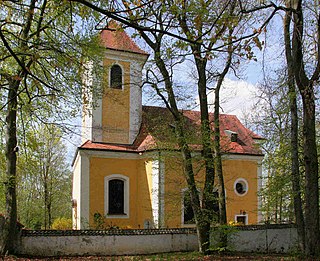
The Roman Catholic pilgrimage church of St. Anna in Munich's Harlaching district is located on a Nagelfluh plateau close to the almost 30-metre steep slope of the eastern Isar high bank above Hellabrunn Zoo. Today's church arose from a church building in the centre of the former village, which is probably the origin of today's Harlaching district, which was probably first built in the middle of the 12th century. The first documented mention of the patronage of St. Anne, whose feast day is celebrated annually on 26 July, dates back to 1524. Remnants of the original structure of the church are preserved in the choir tower.
44. Staatstheater am Gärtnerplatz
The Staatstheater am Gärtnerplatz, commonly called the Gärtnerplatztheater, is an opera house and opera company in Munich. Designed by Franz Michael Reiffenstuel, it opened on 4 November 1865 as the city's second major theatre after the National Theatre.
45. Staatliches Museum Ägyptischer Kunst
The Staatliches Museum Ägyptischer Kunst is an archaeological museum in Munich. It contains the Bavarian state collection of ancient Egyptian art and displays exhibits from both the predynastic and dynastic periods. The associated small Middle East section displays objects from the areas of Assyrian and Babylonian culture. For decades, the Egyptian museum was located in the Munich Residenz, but it was moved to the Kunstareal in June 2013.
Wikipedia: Staatliche Sammlung für Ägyptische Kunst (EN), Website
46. BMW Museum
The BMW Museum is the corporate museum of BMW history and was established in 1973, shortly after the 1972 Summer Olympics opened. From 2004 to 2008, it was renovated in connection with the construction of the BMW Welt, directly opposite. The museum reopened on 21 June 2008. At the moment the exhibition space is 5,000 square meters for the presentation of about 120 exhibits.
47. St. Lukas
St. Luke's Church is the largest Protestant church in Munich, southern Germany. It was built in 1893–96 and designed by Albert Schmidt. It is the only pre-World War II Lutheran parish church building remaining in the historic section of central Munich.
48. Ohel Jakob synagogue
Ohel Jakob Synagogue is a Jewish congregation and synagogue, located at the Sankt-Jakobs-Platz in Munich, Germany. It was built between 2004 and 2006 as the new main synagogue for the Jewish community in Munich. The synagogue was inaugurated on 9 November 2006 on the 68th anniversary of the Kristallnacht.
49. Hl. Kreuz
Heilig Kreuz is a church building of the Roman Catholic Church in Forstenried, a district of Munich in Bavaria. The church is dedicated to the Holy Cross and serves as a parish church for the parish of Heilig Kreuz in the parish association of Forstenried. It houses the Forstenried crucifix, a Romanesque crucifix that was said to have miraculous effects and thus made Forstenried a place of pilgrimage. The building, together with the surrounding church cemetery, is registered as an architectural monument in the Bavarian List of Monuments.
50. memorial stone old central synagogue
The Old Main Synagogue in Munich was located on Herzog-Max-Straße in the old town of Munich. It was built from 1883 to 1887 by King Ludwig II by the architect Albert Schmidt in the Neo-Romanesque style. In June 1938, it was one of the first synagogues in Germany to be destroyed by the National Socialists on the personal orders of Adolf Hitler.
51. Museum Fünf Kontinente
The Museum Five Continents or Five Continents Museum, located in Munich, Germany, is a museum for non-European artworks and objects of cultural value. Its name until 9 September 2014 was Bavarian State Museum of Ethnology.
52. St. Karl Borromäus
St. Charles Borromeo is a church building of the Roman Catholic Church in Munich, Germany. The church is dedicated to St. Charles Borromeo and serves as a parish church for the parish of Charles Borromeo in the parish association of Forstenried. The building complex consisting of church, rectory and community centre is registered as an architectural monument in the Bavarian List of Monuments.
53. WM-Brunnen
On the occasion of the 2006 World Cup, the World Cup fountain in Munich was erected in the +Teamspirit design of the 2006 World Cup football in front of the World Cup Media Centre at the north entrance of the New Munich Trade Fair Centre. The stone sphere made of granite-like norite weighs more than eleven tons. It glides on a thin film of water in the fountain bowl and can be moved with one hand despite its weight.
54. Sankt Theresia
St. Theresia is a Roman Catholic parish and monastery church of the Discalced Carmelites in the Munich district of Neuhausen-Nymphenburg. It was built between 1922 and 1924 according to designs by the architect Franz Xaver Boemmel in the Neo-Baroque style.
55. Bayerische Akademie der Wissenschaften

The Bavarian Academy of Sciences and Humanities is an independent public institution, located in Munich. It appoints scholars whose research has contributed considerably to the increase of knowledge within their subject. The general goal of the academy is the promotion of interdisciplinary encounters and contacts and the cooperation of representatives of different subjects.
56. Museum Brandhorst
The Brandhorst Museum was opened in Munich on 21 May 2009. It displays about 200 exhibits from the modern art collection of the heirs of the Henkel trust Udo and Anette Brandhorst. In 2009 the Brandhorst Collection comprises more than 700 works.
57. St. Johannes
The Evangelical Lutheran Parish Church of St. John was consecrated in 1916 as the fourth Evangelical Lutheran church in the inner part of Munich and as the sixth in the city, which had been enlarged up to that time. After the first three Protestant churches in the city centre were named after the evangelists Matthew, Mark and Luke, it was given the name of the evangelist John in continuation of this tradition. It is located in Haidhausen at Preysingplatz near the Gasteig.
58. Städtische Riemerschmid Wirtschaftsschule München
The Städtische Riemerschmid-Wirtschaftsschule in Munich is a business school for girls. When it was founded as a private institution in 1862 by the liqueur manufacturer Anton Riemerschmid and his authorized signatory Matthias Reischle, it was the first commercial school for girls in Germany. It has been in municipal hands since 1898.
Wikipedia: Städtische Riemerschmid-Wirtschaftsschule München (DE), Website
59. Regierung von Oberbayern
The building of the Government of Upper Bavaria in Maximilianstraße in Munich houses the Government of Upper Bavaria and the Southern Bavaria Aviation Authority, the aviation authority for the administrative districts of Upper Bavaria, Lower Bavaria and Swabia.
60. St. Wolfgang
The Catholic branch church of St. Wolfgang in Pipping is the last completely preserved Gothic village church in Munich. The church, which is a listed building, is considered an exquisite example of medieval village sacred architecture in Upper Bavaria.
61. Magdalenenklause
The Magdalenenklause is a habitable artificial ruin in a secluded part of the forest north of the Boskette near the castle in the Nymphenburg Palace Park in Munich. It was built from 1725 by Joseph Effner on behalf of Max Emanuel. The building, which stands in the tradition of the Memento mori, is considered one of the first ruined architectures of European garden art. The interiors are designed as grottoes.
62. St. Pius
St. Pius is a Roman Catholic parish church in the Munich district of Berg am Laim, which belongs to the deanery of Munich-Perlach. The church, completed in 1932, stands out for its unusual, massive tower that extends over the entire width of the nave.
63. Schloss Fürstenried
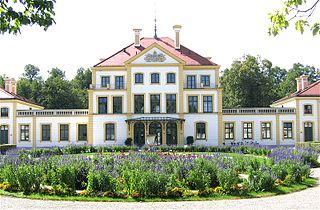
Fürstenried Palace is a Baroque maison de plaisance and hunting lodge in Munich, Germany. It was built from 1715 to 1717 for Elector Maximilian II Emanuel. Today the palace serves as spiritual house for archdiocese and as pastoral center.
64. Teufelsberg
The Aubinger Lohe is a wooded area on a hill on the western edge of Munich in Germany. It is part of Munich's green belt. Since the reforestation with spruces, however, it is no longer a blaze in the sense of a landscape description.
65. St. Lorenz
The Catholic parish church of St. Lorenz in Oberföhring in Munich's Bogenhausen district is a Baroque church building from the late 17th century. The church, dedicated to St. Lawrence, is one of the protected architectural monuments in Bavaria.
66. Sankt Martin
The Roman Catholic parish church of St. Martin in Untermenzing, in Munich's district 23 Allach-Untermenzing, stands on the east bank of the Würm on a small elevation. Until 1945 it was a branch church of the Aubing St. Quirin Church, since then it has been a parish church. Administratively, it belongs to the current Allach-Untermenzing parish association of the Archdiocese of Munich and Freising. The church building is one of the best late Gothic churches in the area and was therefore listed under the file number D-1-62-000-1581 by the Bavarian State Office for the Preservation of Monuments in the list of architectural monuments in Untermenzing.
67. Heunensäule
The Heunen columns, also known as the Heune columns, are round columns made of sandstone, which were originally intended for the reconstruction of the Willigis Cathedral in Mainz, which burned down in 1009. They were probably completed in the 11th century out of anticipatory business acumen in a quarry in the Bullau Mountains near Miltenberg even before the order was placed. However, the client probably opted for other supports, so that the round columns were never needed. There are said to have been 42 of the columns at one time, in the 18th century there were still 14, around 1960 only eight are known.
68. St. Thomas Apostel
The Catholic Church of St. Thomas the Apostle in the Munich district of Johanneskirchen was consecrated on December 2, 1973 by Cardinal Julius Döpfner. It is part of a parish centre that was planned by the architect C. F. Raue as a multi-purpose building and, in addition to the church, also includes the Thomas Chapel, the parish office, the parish hall, various meeting rooms and the apartments of the pastor and the sacristan family. The church interior is characterised by its simple, clear architecture: it is consistently oriented towards the centre, towards the altar. The artistic design of the church was in the hands of the sculptor Max Faller, Munich. The organ was built by Rudolf von Beckerath Orgelbau, Hamburg. It has 18 stops on two manuals and pedal. In 1987–1989, four monumental paintings by the painter Karl Köhler were added. In 2010, Köhler's paintings were replaced in favor of a simple corpus of Christ on the wall behind the altar.
69. St. Johann von Capistran
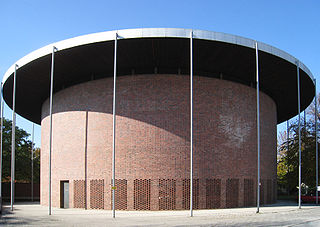
St. Johann von Capistran is a Catholic church in the Gotthelfstraße in the Munich district of Bogenhausen. The round church building was consecrated to St. John Capistranus in 1960 and is one of the most important sacred buildings of the post-war period.
70. Truppendienstgericht und Bundeswehr Dienstleistungszentrum
The Military Service Court South, based in Munich, is a federal court (Germany) within the portfolio of the Federal Ministry of Defence (BMVg). As a military service court, the Military Service Court is responsible for disciplinary proceedings against soldiers under the Military Disciplinary Code (WDO) and for decisions on military complaints under the Military Complaints Code (WBO).
71. Sankt Nikolai
St. Nikolai am Gasteig is a Roman Catholic church building in Munich, Germany. It is dedicated to the holy bishop Nicholas of Myra. Together with the churches of St. Johann Baptist on Johannisplatz and the Old Haidhausen Church in Kirchenstraße, St. Nikolai belongs to the parish of St. Johann Baptist in Haidhausen.
72. Synagoge Reichenbachstraße
The synagogue on Reichenbachstraße Munich is a former synagogue in Munich, Germany. The building is located in the Isarvorstadt near Gärtnerplatz. From 1947 until the opening of the new Ohel Jakob Synagogue in 2007, it was Munich's main synagogue.
Wikipedia: Synagoge an der Reichenbachstraße München (DE), Website
73. Alter Südlicher Friedhof
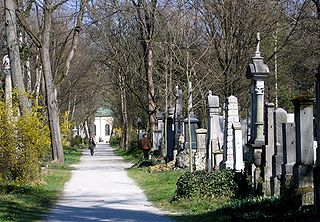
The Alter Südfriedhof also known as "Alter Südlicher Friedhof" is a cemetery in Munich, Germany. It was founded by Duke Albrecht V as a plague cemetery in 1563 about half a kilometer south of the Sendlinger Gate between Thalkirchner and Pestalozzistraße.
Wikipedia: Alter Südfriedhof (EN), Website, Heritage Website
74. Bergson Kunstkraftwerk
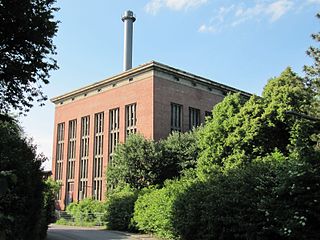
The former Aubing combined heat and power plant is an industrial building in the Munich district of Aubing, which has been a listed building since 2007. Since 2024, it has been home to the Bergson Kunstkraftwerk. Address: Am Bergson Kunstkraftwerk 2, 81245 Munich, formerly Rupert-Bodner-Str. 3-5. Phone: +49 89 4444 348 0.
75. St. Maria Thalkirchen
The Catholic parish and pilgrimage church of St. Maria in Munich-Thalkirchen is one of the pilgrimage churches in the Archdiocese of Munich and Freising. St. Maria Thalkirchen is located in the old village centre of Thalkirchen on a small elevation above the former flood bed of the Isar. It was the mother church and one of the three churches of the old parish of Sendling and has been a separate parish again since 1903.
76. Bayerisches Staatsschauspiel - Marstall
The Marstall, also known as the former Riding School and Marstall, is located on Marstallplatz in the Altstadt-Lehel district of the Bavarian capital Munich. The classicist building was built between 1817 and 1822 by Leo von Klenze and is a listed building.
77. Auferstehungskirche
The Church of the Resurrection in Munich is one of the largest Protestant churches in Munich. It is located in the district of Schwanthalerhöhe, which experienced numerous influxes of Protestant citizens after the First World War. This necessitated a new building with 800 seats, which was carried out by German Bestelmeyer and inaugurated in 1931.
78. Nazarethkirche
The Nazareth Church is an Evangelical Lutheran church building in the east of Munich, on the outskirts of Parkstadt Bogenhausen. It was built in 1961 by the architects Helmut von Werz and Johann-Christoph Ottow. The church belongs to the Evangelical Lutheran parish of Immanuel-Nazareth, which was created in 2012 by the merger of the parishes of Nazareth Church and Immanuel Church. Currently, the congregation has almost 6000 members.
79. Immanuelkirche
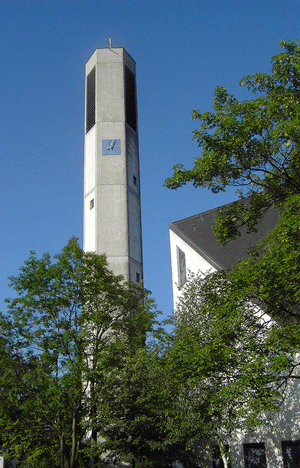
The Evangelical Lutheran Immanuel Church is a modern church building in Munich's Denning district. It stands on the northeastern outskirts of the city between the Wilhelminian villa suburb of Bogenhausen and the Messestadt Riem and has belonged to the Evangelical Lutheran parish of Immanuel Nazareth since 2012.
80. Palais Leuchtenberg
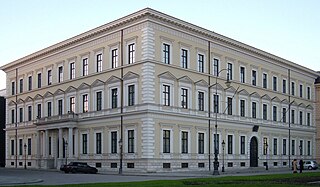
The Palais Leuchtenberg, built in the early 19th century for Eugène de Beauharnais, first Duke of Leuchtenberg, is the largest palace in Munich. Located on the west side of the Odeonsplatz, where it forms an ensemble with the Odeon, it currently houses the Bavarian State Ministry of Finance. It was once home to the Leuchtenberg Gallery on the first floor.
81. Umadum Riesenrad
The Umadum, Hi-Sky before July 2020, is a Ferris wheel opened in April 2019 in Munich's Werksviertel in the Berg am Laim district. Its operation is an interim use of the site on which the construction of the Munich Concert Hall is planned.
82. Augustinerkirche
The Augustinian Church, also called the Augustinian Abbey (Augustinerkloster) or Abbey Church of St John the Baptist and John the Evangelist is a former church in Munich, Germany. Constructed during the 13th century and expanded during the next two centuries, it was the Abbey Church of the Augustinian hermits in the city.
83. Schuttblume
The Rubble Flower is a memorial dedicated to the civilian victims of the Second World War on the Olympic Hill, which was donated by the German Trade Union Confederation (DGB) and the City of Munich for the 1972 Olympic Games.
84. Männerkloster des Heiligen Hiob von Pocaev
The Monastery of St. Job of Pochayev or Obermenzing Monastery is a monastery belonging to the Russian Orthodox Church Abroad (ROKA) in the Munich district of Obermenzing. It is also the residence of Metropolitan Mark, who heads the Russian Orthodox Diocese of the Orthodox Bishop of Berlin and Germany.
Wikipedia: Kloster des Heiligen Hiob von Potschajew (DE), Website
85. Jewish Museum Munich
The Jewish Museum Munich, provides an overview of Munich’s Jewish history and is part of the city's new Jewish Center located at Sankt-Jakobs-Platz in Munich, Germany. It is situated between the main synagogue Ohel Jakob and the Jewish Community Center which is home to the Jewish Community of Munich and Upper Bavaria and houses a public elementary school, a kindergarten, a youth center as well as a community auditorium and a kosher restaurant. The museum was built from 2004 until its inauguration on March 22, 2007 and is run by the city of Munich.
86. St. Michael
St Michael in Berg am Laim is a church in Munich, Bavaria, built from 1738 to 1751 by Johann Michael Fischer as Court Church for Elector and Archbishop Clemens August of Cologne, a brother of Emperor Charles.
87. St. Quirin
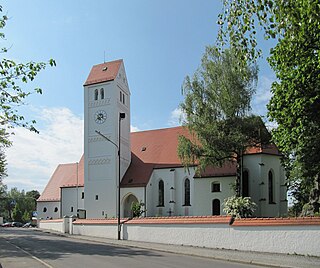
The Church of St. Quirin is the original parish church of Aubing, today a district of Munich. In addition to Aubing itself, the Aubing parish also included neighbouring villages, including Pasing, Laim, Untermenzing, Obermenzing and Allach.
88. Alte Pfarrkirche Sankt Martin
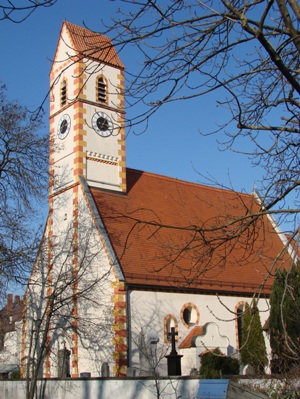
Until 1924, the Old Parish Church of St. Martin was the Catholic parish church of the municipality of Moosach, which was independent until 1913, and then of the Munich district of the same name. Today it is located on Moosach's St.-Martins-Platz.
Wikipedia: Alte Pfarrkirche St. Martin (Moosach) (DE), Website
89. Hochbunker Blumenstraße
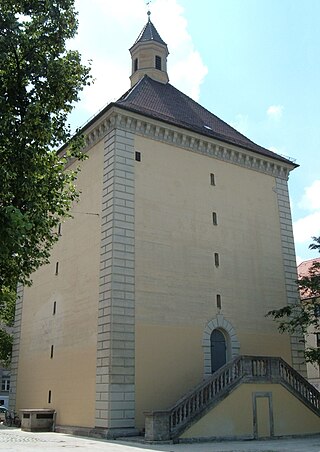
The Blumenstraße bunker, also known as the Blumenbunker, is an above-ground air-raid shelter from the Second World War at Blumenstraße 22 in Munich, Germany. It was built in 1941 according to plans by Karl Meitinger by the municipal building department in the center of the city. The construction took place as part of the Fuehrer Immediate Program, in which Munich was classified as an "air raid shelter of the first order". By the end of the war, 48 bunkers with a similar capacity had been built in Munich. Up to 1,200 people were to find shelter from air raids in the bunker. The then Reich Minister for Armaments and Munitions, Fritz Todt, appeared at the inauguration.
90. Present Continuous
Present Continuous is a monumental sculpture by the Dutch sculptor Henk Visch, which was erected in May 2011 between the entrance of the new building of the University of Television and Film and the entrance of the State Museum of Egyptian Art in Munich on a green strip along Gabelsbergerstraße.
91. Christuskirche
The Christuskirche at Dom-Pedro-Platz 4 in Munich is the church building of a congregation of the Evangelical Lutheran Church in Bavaria. With almost 9,000 members, the congregation is the largest Protestant parish in Munich and, together with St. Stephen's Church and numerous diaconal institutions, shapes Protestant life in the Neuhausen-Nymphenburg district.
Wikipedia: Christuskirche (München-Neuhausen-Nymphenburg) (DE), Website
92. Basilika St. Bonifaz
St. Boniface's Abbey is a Benedictine monastery in Maxvorstadt, Munich, Bavaria, Germany. It was founded in 1835 by King Ludwig I of Bavaria, as a part of his efforts to reanimate the country's spiritual life by the restoration of the monasteries destroyed during the secularisation of the early 19th century.
93. Gasthaus zur Hundskugel
The Hundskugel was a traditional restaurant in Munich. It was located in one of the oldest surviving town houses in the city. It is located in Munich's old town in the Hackenviertel at Hotterstraße 18. The building was first documented in 1484/1485. It is a listed building. From 1983 until his murder in 2005, Rudolph Moshammer was the owner of the building and a regular guest at the inn. Moshammer bequeathed it to the city of Munich, with the condition that it be used for a social purpose. Other famous guests were Heinrich Heine, who lived for a time in the nearby Radspielerhaus, Ignaz Günther, Roman Anton Boos and Franz Anton Bustelli. On May 31, 2011, the restaurant ceased operations for economic reasons. The house was converted and operated by the Todenhöfer family's "Sternenstaub Foundation" as a social meeting place.
94. Bürgersaalkirche

The Bürgersaal is a historical building in Munich, Germany. Also known as Bürgersaalkirche since the consecration of the altar on May 13, 1778, it is the prayer and meeting room of the Marian Men Congregation "Annunciation". It was built in 1709/1710 to a design by Giovanni Antonio Viscardi.
95. Salvatorkirche
Salvatorkirche is a gothic church in Munich, Germany, the former cemetery church of the Frauenkirche. Since 1829 the church has been used by Greek Orthodox Christians and it was the headquarters of the Metropolitan of Germany and Exarch of Central Europe. It is called "Transfiguration of the Savior" by the Greek Orthodox community.
96. Dreifaltigkeitskirche
The Trinity Church is a religious building in Munich, southern Germany. It is a votive church and was designed in Bavarian Baroque style according to plans from Giovanni Antonio Viscardi from 1711 to 1718. It is a monastery church of the Carmelites and a church of the Metropolitan parish of Our Blessed Lady. During the Second World War this was the only church in the center of Munich, which had been spared from destruction by bombs.
97. Sankt Nikolaus
St. Nicholas is a Roman Catholic parish church in the Hasenbergl district of Munich, Stanigplatz 13. It was built during the Second Vatican Council in the spirit of ecumenism at the same time as the neighboring Protestant Gospel Church.
98. Evangeliumskirche
The Evangelical Church is an Evangelical Lutheran religious building in the Munich district of Hasenbergl. It was inaugurated on December 2, 1962. Since 1969, the administration of the Vice Deanery of Munich North has also been located here. The overall complex also includes the parish office, the parish apartments and the Grüß-Gott-Haus with the youth rooms. In addition, the Evangelical Church looks after the Simeonskapelle in the nearby Augustinum residential foundation.
99. Palais Gise
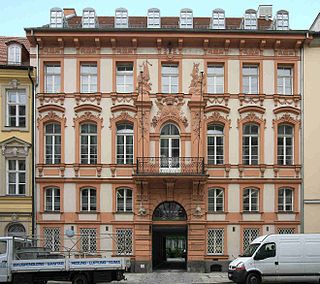
The Palais Gise is a city palace in the late Rococo style at Prannerstraße 9 in Munich. It was probably built around 1760/65 according to the designs of the Munich chief court architect Karl Albert von Lespilliez and is an architectural monument.
100. Maximiliansplatz
Maximiliansplatz is a park-like square in Munich, Germany, located on the border of the districts of Altstadt-Lehel and Maxvorstadt. It used to be known as Dultplatz. Maximiliansplatz is the northwestern part of Munich's Altstadtring.
Share
Disclaimer Please be aware of your surroundings and do not enter private property. We are not liable for any damages that occur during the tours.
